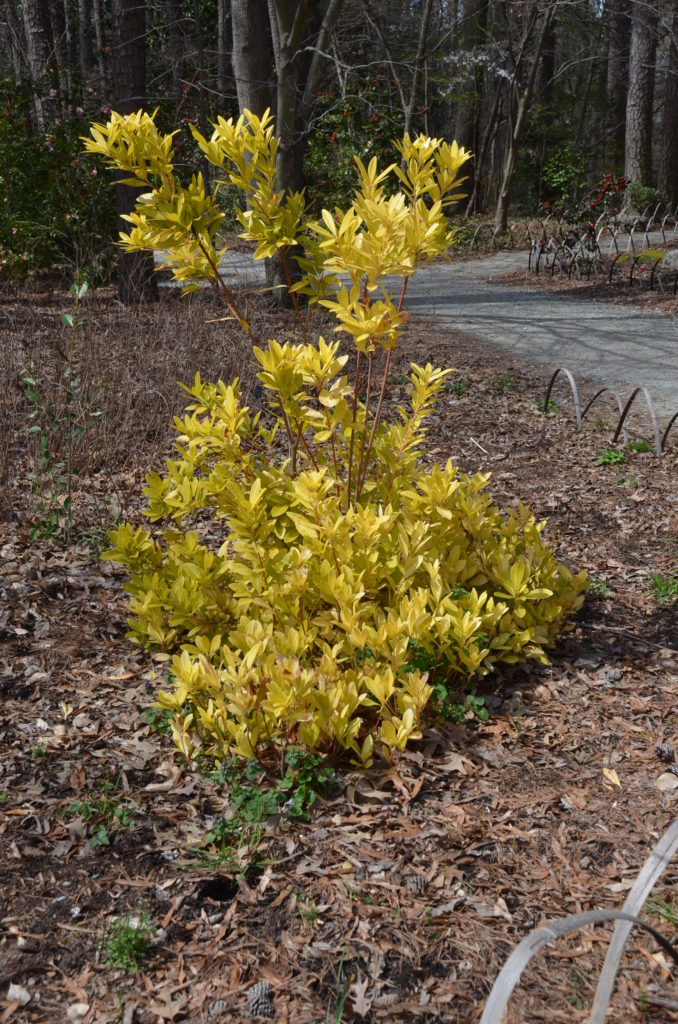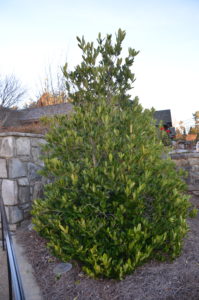There is lots of interest in this shrub group. Anise shrubs (Illicium spp.) are fast growing, evergreen shrubs (USDA zones 7 to 10). They exhibit a multi-stemmed, upright, compact growth habit. The green foliage of Florida anise (I. floridanum) is quite attractive and aromatic, smelling similar to anise spice when crushed. Their shiny, leathery leaves are olive green in color and the 1.5 inch wide dark red flowers appear in early spring.
In general, I. floridanum shrubs grow 10 to 15 feet tall and should be spaced at least 5 to 6 feet apart in the landscape. From Florida to Louisiana, its natural habitats are in wet, swampy areas or along wooded streams in humus-rich acidic soil. Some varieties have demonstrated winter hardiness further north into parts of Tennessee, N. & S. Carolina, and Virginia.
Illicium grows in partial to full shade, but reportedly can acclimate to full sun if irrigated. It prefers moist soil and kept properly mulched and watered during prolonged dry spells. Several cultivars are available including ‘Alba’ with white flowers and ‘Shady Lady,’ a variegated leaf form. Illicium ‘Woodland Ruby’ is an interspecific hybrid between I. floridanum ‘Alba’ and I. mexicanum, and produces showy blooms in spring and fall.

Yellow anise (I. parvifolium), aka small anise, is another Southeast U.S. native. In recent years its popularity has soared with the introduction of new gold leaf cultivars like ‘Florida Sunshine’ and Banana Appeal®. It is more tolerant of full sun and dry soils than other species.
The anise that is used as a spice is derived from a different species, Star Anise (Illicium verum), an evergreen found in southern China and Vietnam.
At the J C Raulston Arboretum in Raleigh, NC are 19 different accessions in its collection, including seven cultivars of Illicium floridanum.
All plant parts of Yellow Anise and Florida Anise are toxic.


 Posted in
Posted in 
